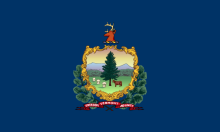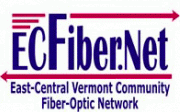
Many Vermont communities are looking to ECFiber and Central Vermont Internet as models for the creation of communications union districts (CUD) to develop regional fiber networks. By combining several towns’ efforts, CUDs bring high-quality Internet service to underserved residents and local businesses.
On March 3rd, four towns from Windham County in the southeastern corner of Vermont voted to create a CUD. The new Deerfield Valley CUD will join the small towns of Marlboro, Halifax, Whitingham, and Wilmington. All four communities are located in mountainous areas where infrastructure development is often challenging and costly. The towns’ joint venture will help finance broadband deployment in the region.
Slow Speeds, High Costs
The towns have been operating on slow DSL connectivity, which is insufficient for things like telehealth services, online education, and local economic development. According to state data from 2018, about 27 percent of all locations in Windham County do not have access to broadband.
Clay Purvis, director of telecommunications at the Vermont Department of Public Service, described how connectivity is an issue in the state because of the high price to deploy the infrastructure:
Our geography is really challenging in Vermont — we are dispersed, we have small towns, we have farming communities — so the distance between service locations is far, so the cost of deploying broadband is more expensive per location . . . Hills are the enemy of wireless technology and it requires a lot more towers, for instance, to bring cell coverage to the same number of people.
More power to small towns
The CUD model minimizes the challenge of getting small, rural towns connected as the structure lets communities band together for modern Internet access. Once approved, the CUD acts as a separate municipal entity working toward the goal of building high-quality broadband infrastructure. The major benefit of joining a CUD is greater funding flexibility and the ability to issue bonds. Moreover, it puts towns at higher chance of getting federal grants and loans to provide service to rural communities.
 Since 2009, ECFiber — Vermont’s first communications district — has connected 23 towns with 1,400 miles of fiber and is now financially strong enough to cover its debt. "The towns aren’t on the hook for anything,” explained Carole Monroe, board member of ECFiber’s partner ValleyNet. “That’s the idea: to get these districts to the point here they have enough revenue where they can be paying back debt.”
Since 2009, ECFiber — Vermont’s first communications district — has connected 23 towns with 1,400 miles of fiber and is now financially strong enough to cover its debt. "The towns aren’t on the hook for anything,” explained Carole Monroe, board member of ECFiber’s partner ValleyNet. “That’s the idea: to get these districts to the point here they have enough revenue where they can be paying back debt.”
Listen to Carole Monroe discuss ECFiber on episode 251 of the Community Broadband Bits podcast.
As large telecom monopolies fail to invest in rural broadband, it is important for rural regions to forge ahead and take control of their connectivity, like ECFiber and now Windham County have. The next step for the Deerfield Valley Communications Union District is to develop a feasibility study with the Windham Regional Commission.







